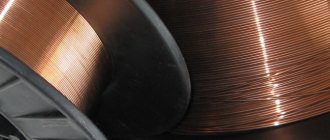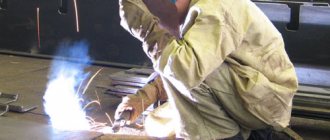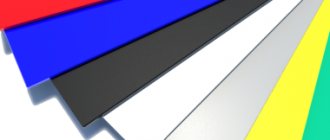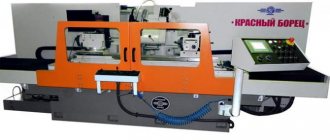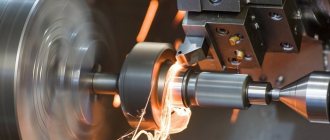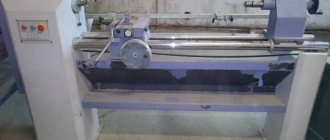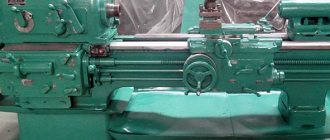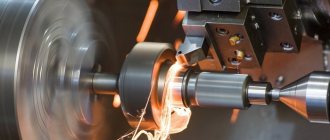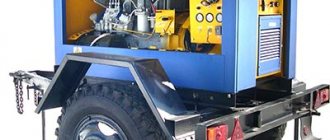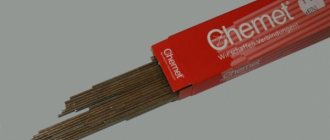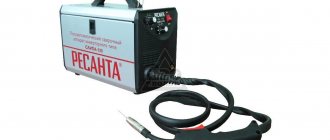Parameters and purpose
The production of copper-plated wire SV08G2S is carried out on the basis of GOST 2246-70, the main application is in the form of a consumable electrode for semi-automatic equipment and for argon arc welding.
Explanation of the abbreviation:
- SV - welding work;
- 08 - amount of carbon;
- G - presence of manganese;
- 2—percentage content;
- C - 1% carbon present.
To obtain unique technical parameters, these products are alloyed with refractory metals.
Where are welding jobs needed?
It may even be that some people may need welding work in a domestic environment, but the overwhelming majority of welding work is required in a production environment, where welding is considered almost an integral function of production. When a situation arises in which it is necessary to weld metals together , the question also arises of how this work should be performed, what welding machine and materials should be used to do this, and similar issues.
There are various methods of welding metals, various consumables. They are selected depending on what metals need to be welded. If you need to weld non-ferrous or refractory metals, you should use a welding additive of a certain type.
How is the grade of material selected?
Such a question may well seriously puzzle a beginner, but if you understand everything consistently, then there is nothing overly complicated in this matter. There is a list that indicates what type of welding certain metals should be.
Receiving process
Wire 08G2S is a common brand because it is universal - it is used to weld low-alloy steels and metals containing carbon. It is ideal for the work of novice welders and experienced craftsmen, sold in cassettes for professional use weighing 15 kg or more, a compact version - in 5 kg spools.
During long-term storage, the wire does not unwind, since the rows are wound tightly. For production purposes, welding wire of this marking is sold in coils from 250 kg to a weight of more than a ton. Such packaging has a beneficial effect on the wire and, when passing through the automatic feeder, does not wear out the parts due to twisting. The cost in packaging is much cheaper than wound on reels or cassettes.
Flux-cored and gas-protective flux-cored wire
To get the job done in the field or in open buildings, flux cored welding wire was developed. The seams are of high quality, mechanization of the process takes less time, and less time is spent on cleaning the metal from splashes. This type of wire has two subtypes: self-protective powder wire and gas-protective powder wire.
Gas-protective is designed for welding with a semi-automatic and automatic welding machine; low-alloy and carbon steels can be welded; welding is carried out in a protective gas environment. This can be carbon dioxide, argon, or mixtures of them. This method has a high degree of metal penetration, which allows welding of lap, corner, and butt joints even in one pass, depending on the specific case each time.
Types
There are several types of low carbon steels with:
- flux core;
- high degree of surfacing;
- flux core;
- core made of metal powder.
These are new types of welding wire, with their help it is possible to make high-quality welding of metal parts, the welding speed increases, the degree of metal spattering decreases, the deposition rate is high, and low smoke is observed during welding. This fact is also very important; the smoking effect is especially small when welding metals in an argon environment or in a protective gas environment, which consists of a mixture of gases with a high argon content.
Self-shielding flux-cored wire is also called flux-cored wire, or self-shielding. It has a core containing the necessary slag-forming and weld-protecting additives. This eliminates the use of bottled gas, which is also beneficial, since the use of bottled gas involves waste of time, transportation costs, waste of money and increased danger in the workplace, because the cylinders are under high pressure. In addition to these problems, cylinders require periodic certification.
When welding semi-automatically using gas, a protective pool is formed, the gas comes out of the nozzle and hits the molten metal of the parts being welded and creates conditions for high-quality welding. Wire, when welding occurs without the use of gas, creates protection and high-quality welding of metal in a different way. During the melting of the wire, the flux that is included in the composition melts at the same time and forms a protective layer in the welded area, which is not removed by the air flow. Thus, it is advisable to use this type of welding in open areas with high wind speeds, i.e. in field conditions.
Type and presence of chemical elements
Wire marked SV08G2S is available in the following types: with low copper content and copper-plated with the addition of the letter “O” at the end of the abbreviation.
Percentage content:
- silicon from 0.7 to 0.95;
- manganese no more than 2.1;
- copper 0.25 and 0.3;
- nickel 0.25;
- sulfur less than 0.025;
- carbon in the range of 0.05–0.11;
- phosphorus about 0.03;
- chromium 0.2.
For a product marked SV08G2S-O according to GOST, the presence of nitrogen is allowed, but not more than 0.01%.
Recommendations
As an addition, we will provide you with some recommendations regarding the purchase of a welding helix. You can use these same instructions when purchasing other welding parts.
A certificate of conformity is the first request from the sales consultant before purchase. The certificate shows whether the wire actually meets the standards of the certificate.
This will save you from low-quality and counterfeit components. You should also not forget about the rare possibility of certificate forgery.
Mechanical characteristics
Manufacturers of such products necessarily carry out strength testing , so any batch of shipped wire of this brand meets the requirements listed in the table.
| Wire diameter in mm | Tensile strength, kgf/mm2 | |
| for surfacing | welding | |
| Less than 1.5 | 90—136 | 89—135 |
| 1,6 | 89—130 | 69—101 |
| 2,0 | 81—121 | |
| More than 2.0 | 69—106 | 66—96 |
At the same time, the elongation coefficient (relative elongation coefficient) is up to 30%. Yield strength is in the range of 415-440 MPa, and the impact strength value is 56 J/cm2 at 40°C and 69 J/cm2 at 20°C.
Distinctive features
If we compare the SV08G2S welding wire with other analogues, it has the following differences:
- Stability of the welding arc, which reduces the occurrence of electrode sticking to the surface of the metal being welded.
- Supports a wide range of different welding modes.
- Suitable for many types of semi-automatic industrial stands and apparatus.
- Minimizes spattering of molten metal, which improves the strength characteristics of the weld.
- Re-igniting the arc is easy and quick.
- Saves consumables, such as copper tips.
All of the listed features make it possible in practice to weld any metal structures through a strong and reliable seam connection, while the edges of the parts are completely welded and do not have negative gaps, porosity and other similar defects.
Additive melting point
This is also an important fact for achieving quality. The fact is that the melting temperature of the additive should ideally be slightly lower than the melting temperature of the elements being welded, or, in extreme cases, the same. This is required due to the fact that the elements being welded are first heated with an electric arc until the edges of the parts being welded melt, and then filler material is added, which will begin to melt a little later. If the melting temperature of the filler rod is higher than that of the base metal, the metal may burn out.
If the welding rules listed below are followed, the result will be a smooth seam, high strength and quality. If the melting temperature is not selected correctly, there is a risk of cracks in the metal.
Basic rules for quality welding:
- The additive must have the same metal thickness as the thickness of the parts being welded.
- The cleanliness of the wire plays an important role: it should be free of scale, paint, oil, and various contaminants.
- Melting of the wire should occur smoothly, without jerks; this is the task of a high-quality welding machine and, partly, a welder.
- The seam must be laid evenly, it should not have pores or cracks, the metal must be solid, without breaks.
Typically, welding metal with welding wire is carried out in an environment of carbon dioxide or argon, but there are other options for welding metal. Shielding gas is needed to protect the bath of metal being welded from oxygen, in this case the seam is much neater and smoother. When welding any non-ferrous metal, you need to select wire with the most similar metal composition.
To weld aluminum, you need wire SV-97, SV-A85, you can also select its analogues from a foreign manufacturer, for example:
- ER 1100;
- OK Autrod 1070;
- OK Autrod 18.01.
To weld low alloy steels, you need to have a lot of wire. The fact is that the demand for welding low-alloy metals is much higher than non-ferrous, high-alloy or any other types. Perhaps the most common wire is the SV-08G2S grade. Manufacturers produce this type in two versions:
- Without protective coating;
- Copper plating. This option is considered to be of higher quality, resulting in a more even arc burning, and reduced wear on the consumables of the welding machine, for example, a copper tip. The copper coating also protects the welding wire from corrosion during long-term storage.
If you use filler rods or filler wire when welding metals, you can use flux. Flux has the ability to influence the structure of the seam, the seam is even and smooth, but without flux the seam will be subject to premature destruction. Also, and this is also very important for the quality of welding of the products being welded, flux makes the welding seam more tensile, which increases the reliability and durability of the product.
Application area
The wire is produced in different sections, so it is used to connect thin-walled and thick metals: for example, in everyday life a diameter of 2 mm is often used to repair small parts, and a cross-section of 6 mm is used in the engineering industry for welding the base of machine tools or other powerful metal structures.
Copper-coated welding wire SV08G2S-O and its application:
- manual welding, when argon and its mixture with CO2 are used for protection, and an infusible tungsten electrode is used;
- semi-automatic version with argon protection;
- as an alloying additive for the weld pool, when the melting flux forms a protective cloud from possible oxidation, and the solidifying slag forms a solid surface with similar protective properties during the crystalline formation of the weld.
SV08G2S-O has better compatibility with all manufactured semi-automatic machines, helps to reliably join manually any carbon steel with high quality seams . Well-known experts in welding technologies note the special uniqueness of wire with such markings for forming a seam bead and uniformly filling the gaps between the edges of parts with molten metal.
Types of wire
The article will talk about:
- Various welding additives.
- Product labeling.
- Flux-cored wire designed for welding aluminum, which can also be used to weld titanium metal.
- For cooking steel, this is more common than other types.
- Wire that can be used to weld copper.
- Additive.
- Capable of welding cast iron and nickel alloys.
- Capable of welding stainless steel.
- Additive diameters.
Marking
An important fact for quality is its chemical composition, which is important when choosing. The composition is indicated on the product of a domestic manufacturer, provided that GOST 2246–70 is complied with; according to foreign standards, this is the AWS . In the CIS, production is quite powerful, for example, copper-plated welding sv08g2s and many other types.
Explanation of symbols on domestically produced labels:
- SV - means it is welded.
- A - this indicates that it contains nitrogen.
- B—niobium content.
- B - contains tungsten.
- G - there is manganese.
- D - contains copper.
- M—molybdenum content.
- N—nickel content.
- C - contains silicon.
- T—titanium content.
- F - vanadium.
- C - zirconium.
- X - chrome.
- Yu - aluminum.
- If there is a letter A at the end of the marking, this means that it is made of high quality steel with a minimum content of impurities.
- If there is an AA symbol at the end of the marking, this is a sign that this is the highest quality steel, and there are even fewer impurities in it than in the previous version with the A sign.
Wire SV-08G2S
If we take this view as an example, we can look point by point at what this marking means:
- SV - means that it is welding.
- 08 - this indicates that it contains alloyed elements, the mass fraction of which is 0.08%, in this case we are talking about carbon.
- G - this letter symbolizes the content of manganese in the metal from which it is made.
- 2 - means that the wire contains about 2% of the substance indicated next to this number. In this case we are talking about manganese.
- C—there is silicon in the wire. In the example under consideration there is no number after C, this indicates that there is less than 1% silicon, but more than 0.5%.
If we take SV-06Х21Н7БТ , we can conclude that it is welding, it has 0.06% carbon, 21% chromium, 7% nickel, and is alloyed with niobium and titanium.
Another example can be given: SV-08Х19Н10МЗБ , welding wire, which contains 0.08% carbon, 19% chromium, 10% nickel, 3% molybdenum, alloyed with niobium. There are cases when aluminum is marked with the symbol A: this is found in modern markings.
If you look at the marking SV-A97 , you can understand that it consists of 99.7% aluminum.
Having examined the marking SV-AK5 , you can find out that this is a wire that consists of 95% aluminum and 5% silicon. To order, you need to accurately indicate the labeling. There are situations in which it is not possible to accurately read foreign standards. GOST is always easier to read and decipher. If it is not possible to purchase a domestic manufacturer with the appropriate parameters, you need to contact a specialist who will suggest a foreign-made analogue.
What types exist
There are approximately 77 brands of all brands intended for welding various metals. They are divided into 3 types:
- Welded low-alloy, includes 6 grades containing up to 2.5% alloying elements.
- Welded alloy, includes 30 grades, contains from 2.5 to 10% alloying elements.
- Welded high-alloy, has 41 grades, contains more than 10% alloying elements.
The types are divided conditionally into parts depending on their intended use. Some types are used for welding low-alloy steels, others - for steels with a high carbon content, others - for welding various non-ferrous metals, and there are also those that are used for welding metal under submerged arcs, or copper-plated, such as welding SV08G2S.
For welding additive
The wire itself is a filler material, the only difference is that with different methods of welding metal, this filler material is fed into the metal being welded in different ways. After the start of the process of welding metal parts, a filler material of a certain diameter and composition, as required for welding a certain metal, is fed into the seam where the metal is already molten, and melts together with the two parts being welded at the point of their connection, at the edges of the metals, the function of the additive is to to fill the weld with metal.
This suggests that the filler material is the material that restores those losses that occur when metal is lost during the welding process. Instead, there are rods made of filler material, tapes, and what to use from this is seen by the specialist himself, who is trained in all the nuances when welding metals.
The main condition necessary for high-quality welding of metals is the composition of the additive as close as possible to the composition of the parts that need to be welded. You need to know what the amount of carbon is: the plasticity of the seam depends on this; sulfur and phosphorus are considered harmful to the quality of welding; their quantity should be as small as possible.
Deposition coefficient
Surfacing work is carried out in production to correct minor defects in welding, as well as to give surfaces improved physical properties. The wire deposition coefficient (hereinafter abbreviated as CNC) is one of the most important parameters of welding materials.
The specific value of the KNI is determined:
- The chemical composition of the resulting compound.
- The presence of a joint coating - with a high percentage of copper content or not.
- The polarity of the welding current is direct or reverse.
- Type of current - direct or alternating.
The deposition rate is 8.5 g/Ah and does not fall below.
Decoding the wire brand and its advantages
It is not very difficult to understand what SV08G2S welding wire is. The letters at the very beginning indicate welding wire. The numbers 08 indicate the content of hundredths of carbon in the wire. The letter G means manganese, and the number after it is the quantitative content of this element in the wire - 2%. The letter C stands for silicon .
If there is no number after this letter, then this should be understood as the fact that silicon is contained in the wire of the described brand in an amount of less than 1 percent. This brand of welding hardware contains manganese. Thanks to it, the strength characteristics of the joint are increased, since this element forms a pronounced crystal lattice of the welded joint. Silicon improves the mechanical properties of the product. The hardware described in this article has the optimal silicon and manganese content (0.83/1.95). This provides a number of advantages for its use in surfacing operations:
- its use allows you to obtain a high quality connection;
- hardware provides high strength characteristics of the seam;
- thanks to it, the minimum cost of manufacturing welded material is ensured;
- The hardware of this brand has a stable and chemical composition.
Why do you need to know KNP
Each performer, when carrying out similar work, must know this parameter, since it determines the amount of deposited metal over a certain time period, at a predetermined current value.
The KNI can be of a higher value, which directly depends on:
- types of surface coating of metal structures being connected;
- chemical components of metal products;
- type of current polarity used.
V. N. Glazov, education: vocational school, specialty - 4th category welder, work experience since 1992: “Young specialists need to devote a lot of time to theoretical training, then in practice they will confidently apply the acquired knowledge and not hesitate when choosing different welding parameters on the chemical composition of metal structures."
Main advantages
Wire of similar markings allows you to make high-quality sealed seams; during welding, the arc is characterized by stable combustion, regardless of the equipment used: it is budget class or for professionals. Restarting the arc when it suddenly goes out is not a problem even for beginners.
When welding in shielding gas, the metal practically does not spatter, the seam joint has a pleasant appearance, which is important when repairing structures that remain in plain sight. With this connection, additional processing or grinding is not used, as it is unnecessary. When using a copper tip, its melting during long-term operation is insignificant, because the wire marked SV08G2S has absolutely no effect on it.
Packaging and certificates
During factory winding, SV08G2S wire is packaged in the following containers:
- K-200 coils, 5 kg each;
- K-300 - 15 kg;
- rosettes and frame cassettes 15-16 kg each;
- cardboard boxes, European-style pallets or stretch film;
- skeins with two layers of impermeable paper or fabric for packaging - up to 90 kg;
- large coils in stretch film 1.0-1.3 t.
When stored in cassettes or reels, non-row or row winding with different tension forces is used.
There are certificates for products:
- certificate of approval from the Russian Maritime RS (Register of Shipping) category 2YMS;
- NAKS certification certificate;
- BelSt - has been operating in the Republic of Belarus since 1992;
- GOST R.
Any type of packaging of a similar brand of welding wire must have a certificate upon shipment; without them, products are not shipped to customers.
Requirements for delivery conditions
With the consent of consumers, products are supplied in reels or cassettes weighing 5 kg or 15 kg. The wire winding should be a continuous thread, laid in dense rows that prevent it from unwinding arbitrarily during transportation.
Large-diameter products are sold in sealed packages without winding on reels, weighing 80 or 250 kg. Heat treatment of the supplied wire is allowed to improve its properties, if this was not provided for according to the standard manufacturing technology. The surface of copper-plated products may sometimes have processing residues in the form of soapy grease upon delivery. This, in accordance with GOST requirements, is permissible in small quantities, but the lubricant should not contain sulfur and graphite.
